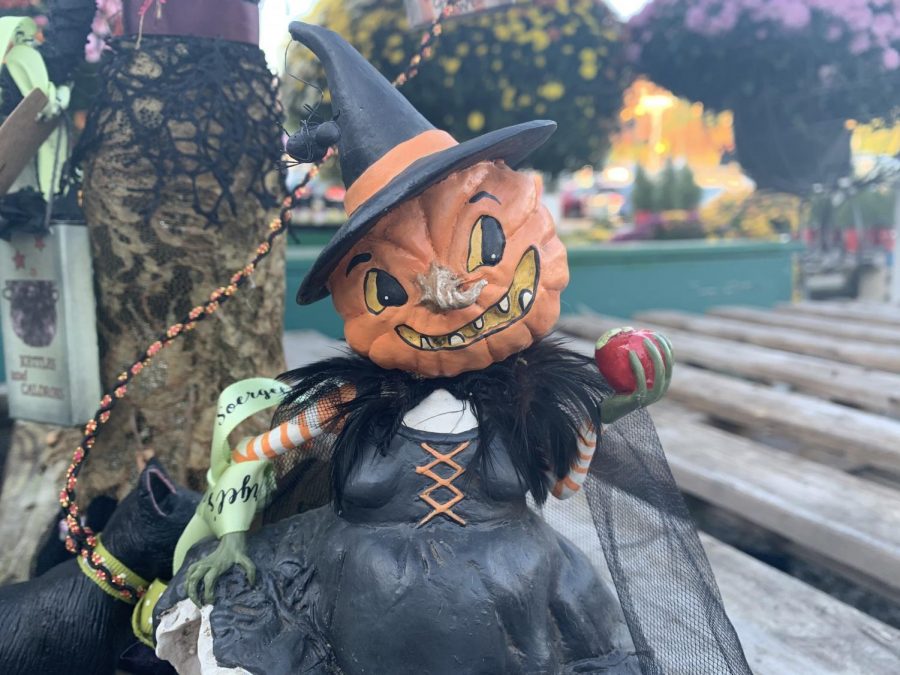The History behind Halloween
Beyond the candy and the spookiness, few of us know the origin of Halloween.
The popularity of pumpkins stems from both the Celtics and the British.
October 31, 2019
For the majority of society, Halloween is the one day a year it’s considered “normal” to walk door-to-door wearing a mask and asking strangers for candy and then getting eat all of said candy without any judgment. Neighborhoods show off a plethora of decorations, ranging from simple jack-o’-lanterns to extravagant displays of monsters, with the intent to scare trick-or-treaters and spread the Halloween spirit.
Despite the holiday being loved and celebrated across the country, the origin of Halloween is barely known by most. Many people count down the days until October 31st without knowing why the holiday even exists. Behind the numerous traditions lies the roots of history. While Halloween now is seemingly commercialized, the celebration has deep connections to both ancient religion and culture.
The original Halloween-like festival originated in the Celtic culture, nearly 2,000 years ago. The Celtics held an annual celebration called the Samhain festival. Like Halloween, the Celtics would wear costumes, usually made of animal skin. The purpose of this was to ward off any “evil” spirits, by appearing to be a spirit themselves.
The Celtic New Year, November 1, was believed to dissolve the boundaries between the mortal world and the spirit world the day before the new year began. Thus, October 31 was deemed the official date of Halloween. This concept of the connection between the living and spirit realms exists in many cultures, yet today’s Halloween stems from Celtic rituals.
Similarly, the monsters and ghouls associated with the holiday come from spirits which are believed to be released on the 31st, such as vampires and ghosts.
As for the candy aspect of Halloween, that also comes from the Celtics. Instead of receiving candy from neighbors, some gave treats to the spirits in an effort to show that they meant no harm towards the spirit world.
It is not truly Halloween without the domination of pumpkins. Whether it be lattes or simply jack-o-lanterns scattered around a yard, pumpkins are everywhere during the Halloween season. They can’t be avoided. But has one ever stopped to ponder why, exactly, carving faces into pumpkins is such a well-renowned symbol for the holiday?
The staple pumpkin is one of the few Halloween traditions that is not a result of the Samhain Eve. Rather, it originated in Britain in the 1800s. In the Middle Ages, the British would go door to door, like trick-or-treaters, asking for food to use in prayer for the dead. While doing so, they would often carry turnip or pumpkin lanterns that were carved out in order to display light. Some viewed the pumpkin lanterns as an anti-spirit object, birthing the connection to Halloween.
One may wonder, though, how Halloween became such a large part of American culture when it originated across the world. As with most traditions, it was brought over during the Colonial Era by immigrants from various parts of Europe.
America’s Halloween differs from similar celebrations in other areas of the world, simply because the differing cultures of the immigrants began to mix aspects of each nationality into one. The Irish are credited with spreading the holiday, after fleeing to the States due to the Potato Famine.
For Halloween itself, it was during the 1900s that the shift was made from spiritual beliefs to community fun. Modern-day Halloween parties, haunted houses, and trick-or-treating arose.
Universally, Halloween is a prominent part of autumn itself. Especially in America, the holiday and the traditions that come with it are known by all. But apart from the costume parties and candy corn, many fail to understand the history that allows such a celebration to exist. While participating in all of the excitement and “spookiness,” it is worth remembering how far Halloween has come.












